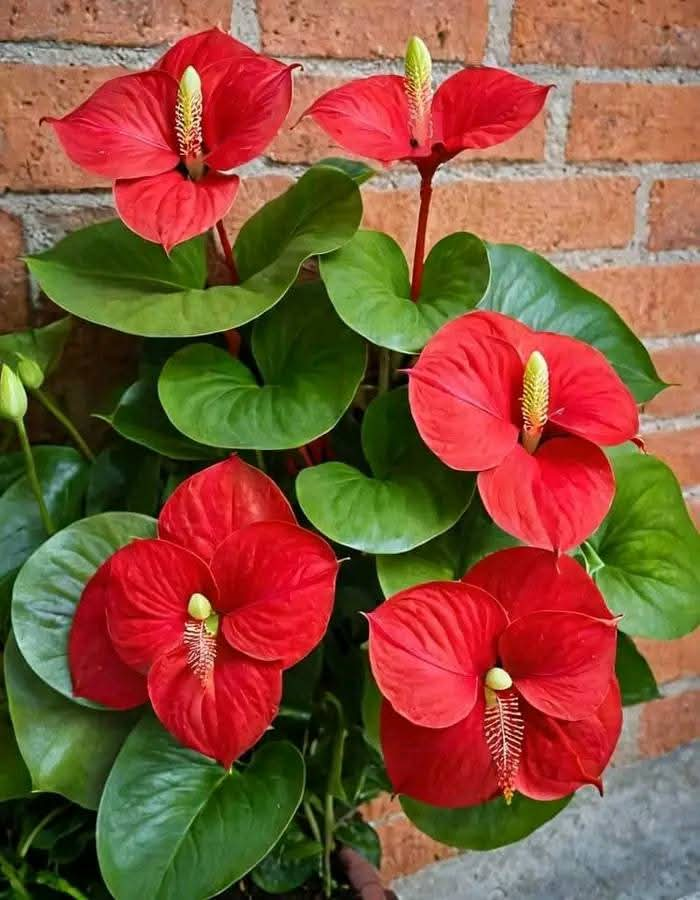Anthuriums, known for their glossy, heart-shaped leaves and striking flowers, are a popular choice for indoor plants. They thrive in the right conditions, offering vibrant blooms that can last for months. With the right care, anthuriums can be a stunning addition to any home. Here’s a guide to growing and maintaining healthy, flowering anthuriums:
Light Requirements
Requirement: Anthuriums thrive in bright, indirect light. Position your plant near a window with sheer curtains or in a spot with filtered light. They need enough light to encourage blooming but should not be exposed to direct sunlight, as it can scorch the leaves and cause sunburn.
Avoid: Do not place anthuriums in areas with low light for extended periods. Insufficient light can lead to leggy growth and reduced or absent flowers.
Temperature and Humidity
Requirement: Ideal temperatures for anthuriums are between 65-80°F (18-27°C). They prefer a warm and stable environment, free from sudden temperature fluctuations. In addition to warm temperatures, high humidity is essential for optimal growth. Aim for humidity levels of around 60-80%.
Avoid: Avoid placing your anthurium near cold drafts or in areas that experience sudden temperature changes. These fluctuations can stress the plant, causing leaf damage or even leaf drop.
Watering
Requirement: Keep the soil consistently moist, but not soggy. Water thoroughly when the top inch of the soil feels dry to the touch. Make sure the pot drains well so that water doesn’t accumulate at the bottom, which can cause root rot.
Avoid: Never allow the soil to dry out completely between waterings, as this will stress the plant. Similarly, avoid overwatering, which can lead to root rot, especially in poorly draining soil.
Soil and Potting
Requirement: Choose a well-draining potting mix that mimics the conditions anthuriums naturally grow in, such as a mix for orchids or epiphytic plants. A mix of bark, perlite, and peat moss ensures good drainage and air circulation around the roots.
Avoid: Do not plant anthuriums in heavy, compacted soil that retains too much moisture. Additionally, avoid using pots without drainage holes, as this can lead to waterlogged roots and root rot.
Fertilizing
Requirement: During the growing season (spring and summer), feed your anthurium every 6-8 weeks with a balanced liquid fertilizer, diluted to half-strength. This provides essential nutrients without overwhelming the plant with excessive nutrients that could hinder blooming.
Avoid: Over-fertilizing can lead to excessive foliage growth at the expense of flowers. Additionally, avoid fertilizers with high nitrogen content, as these can promote lush leaves but fewer blooms.
Humidity
Requirement: Maintaining high humidity is crucial for anthuriums. You can achieve this by misting the plant regularly, using a humidifier, or placing the pot on a humidity tray filled with water and pebbles. This helps keep the air around the plant moist, encouraging healthy growth and vibrant flowers.
Avoid: Low humidity levels can cause the leaves to develop brown tips, signaling stress. Keep the air around the plant humid, especially in dry indoor environments.
Pruning and Maintenance
Requirement: Regularly remove dead or yellowing leaves to maintain the plant’s appearance and encourage new growth. This helps the plant conserve energy for producing flowers and keeps the foliage looking tidy.
Avoid: Don’t let dead or decaying foliage sit on the plant for too long, as it can attract pests and disease.
With the right care, anthuriums will reward you with their vibrant flowers, adding elegance and color to your home. By providing optimal light, temperature, humidity, and watering conditions, your flamingo flower will thrive and continue to bloom for years to come.
